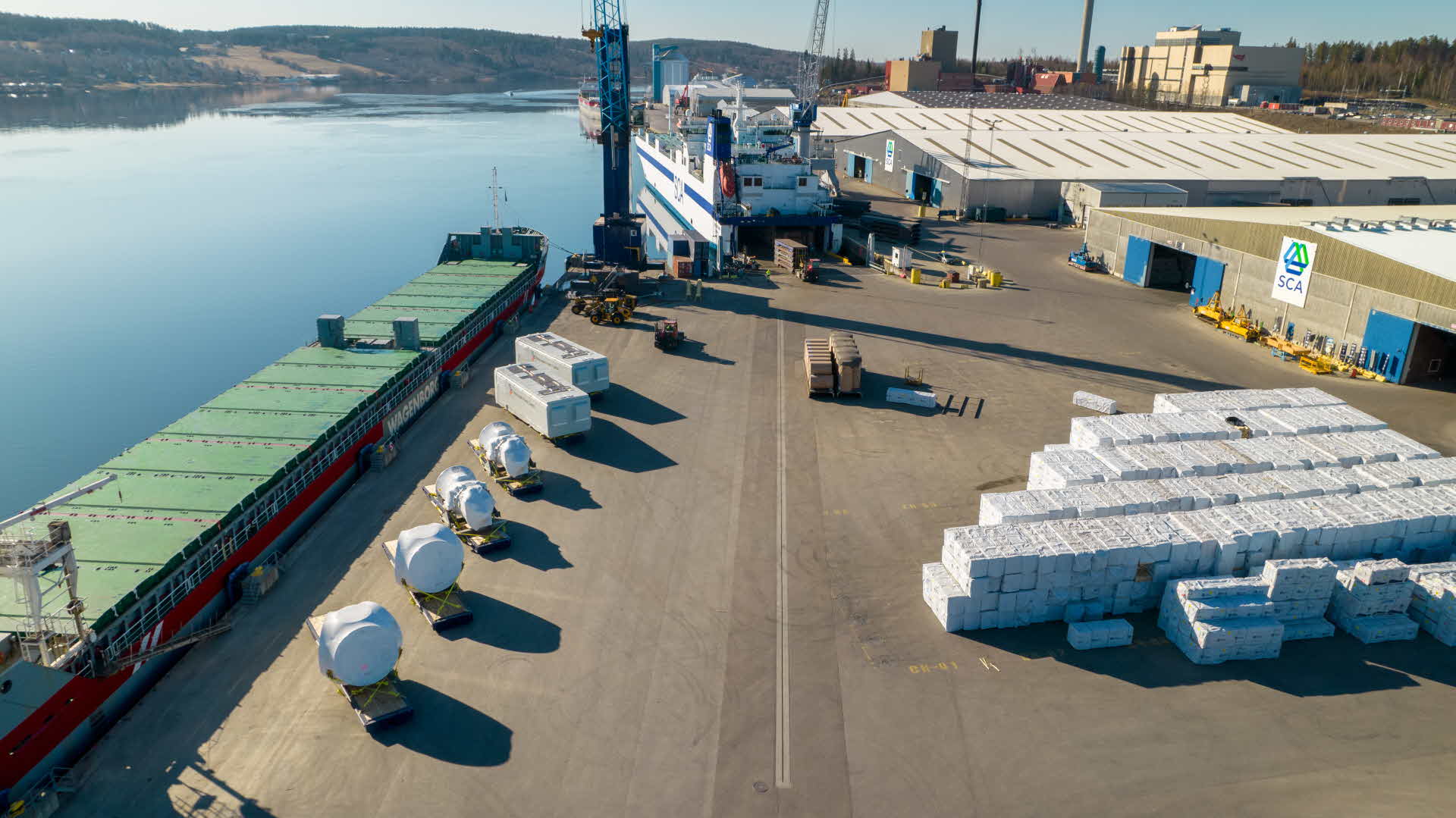
- MEDIA
- CUSTOMISED LOGISTICS SOLUTIONS FOR BUILDING WIND FARMS
Customised logistics solutions for building wind farms
- Article
- Logistics
During the spring and early summer, SCA Logistics will be delivering main components to 24 turbines from Rotterdam to the Klevberget wind farm west of Sundsvall. The extremely heavy components and exacting schedule demand customised solutions.
The turbine parts, which are delivered as 72 separate components weighing between 50 and 85 tonnes, are destined to sit atop 118 -metre-high towers. Manufactured in Europe, the components are transported to the Port of Rotterdam by river on barges before being loaded onto SCA Logistics’ Ro-Ro vessels for shipment to the Sundsvall terminal. From there, the westward journey to the Klevberget wind farm continues by road on Mammoet trucks. Delivery will take 12 weeks.
Many months of planning
Dutch heavy lifting and transport specialists Mammoet have overall responsibility for transportation from factory to construction site and the company has chosen to collaborate with SCA Logistics among others. Planning involving all parties has been underway since August last year.
“This kind of project involves many different interfaces, so meticulous coordination is demanded to ensure that everything runs smoothly, from port operations to the storage of components. Delays to deliveries are out of the question, as this would create bottlenecks and downtime in the assembly of the wind turbines. It was therefore vital for us to identify a reliable logistics partner,” says Gyrup Nielsen.
SCA Logistics Sales Manager Tomas Andersson also emphasises the importance of meticulous planning.
“It’s essential in order to ensure that things remain on schedule, as well as to make the logistics as cost-effective as possible. Safety concerns too have a major impact on this type of maritime transport. We have engaged an external company in Rotterdam to secure the cargo according to instructions issued by Mammoet’s technical division. Cargo carriers are then secured to the vessel’s floor by our own crew,” he explains.
Gigantic components
Wind turbine components are gigantic and both their weight and their length place additional demands on logistics. While Roll-on/Roll-off vessels are ideally suited to this type of transportation and require no adaption, heavy-duty cranes are required for loading and unloading and many special arrangements must be made for road transport.
“Apart from anything else, we must apply for a permit for each component to be shipped and check the infrastructure along the route. Moving overhead cables and reinforcing roads are just a couple of examples of the measures we are required to take,” says Gyrup Nielsen. “That said, we always try to make the smallest possible alterations to the road and to minimise the impact for local people and other road users.”
One way to minimise the impact is to drive during nighttime. Each delivery involves a convoy of articulated lorries making one or two nightly return trips in quick succession.
SCA is investing in wind power
Wind power is an important business area for SCA, and not only when it comes to logistics. Renewable electricity is a crucial resource for society’s green transition to a more sustainable future and SCA is keen to contribute.
As Europe’s largest private forest owner, SCA owns large areas of land with favourable wind conditions. SCA has been leasing land for wind farms since 1997 and the company is now increasing its commitment through acquisition and building wind farms on its own land.
SCA acquired its first wind farm, Skogberget, in December 2022 with the purchase of 36 wind turbines in Markbygden in Piteå Municipality. The long-term goal is to generate 11 TWh of wind power on SCA’s own land, the equivalent of electrifying every car in Sweden.
“Here at SCA Logistics, we are ready to assist all future wind power initiatives with efficient logistics – whether that be SCA’s own projects or investments by other companies. Our Ro-Ro vessels and logistics chain are ideally suited to this type of advanced project cargo,” concludes Tomas.
Text: Kerstin Olofsson
Photo: Håkan Sjödin